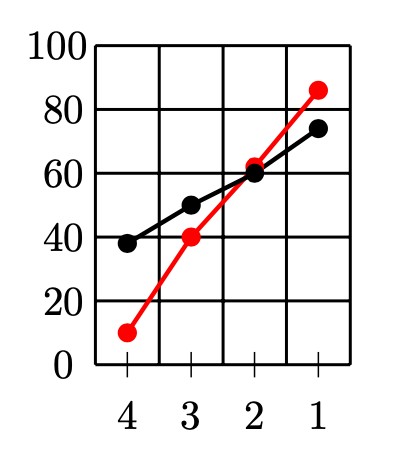“One of the painful things of our time is that those who feel certain are stupid, and those who have any imagination and understanding are full of doubt and indecision.” [1]
It is common to have difficulty self-assessing a skill and discrepancy between the outcome of that self-evaluation and the opinion of others.
It is usual to be overly optimistic when evaluating her performance on social or intellectual tasks. Several studies show that the average person, when asked, claims to be above average [2], Which is statistically impossible. Other studies [3]And the [4] It indicates that 42% of the company’s engineers believe they are among the top 5% and 94% of the university professors interviewed consider the quality of their work to be above average.
M 1999, Dunning E Krueger [5], Two social psychologists, took up this issue and concluded that fools overestimate their abilities. Two reasons have been put forward to explain this phenomenon: Inefficiency leads to wrong conclusions and deprives individuals of the skills needed to realize their shortcomings. They note, for example, that by training their respondents to solve logic puzzles, they increased their ability to correctly assess their proficiency level.
Over the following years, numerous studies confirmed Dunning and Kruger’s results in various contexts. Participants in each of them received two scores that measure their proficiency in an intellectual skill. The first represents the participant’s self-evaluation and the second was given by a test or interview score committee. Next, the participants were grouped into four groups of the same size. The first, the Q1 group, was made up of 25% of the respondents who scored the best scores awarded by the bank. The second group, the Q2 group, which was made up of 25% of the participants who obtained the best marks awarded by the bank, with the exception of group Q1. And so on until Q4, which grouped the participants with the worst scores the bank awarded.
After forming the four groups, the averages of the assigned and awarded scores in each group were calculated. The chart below shows the typical result.

On the coordinate axis, the four groups and on the mean coordinate axis. In red, the average scores for each group attributed to the bank, and in black, the average scores for each group’s self-assessment. While in the lower quartile, the average self-assessment is higher than the test average, in the upper quadrant the relationship is reversed.
Dunning, Krueger, and later authors highlight one aspect of the diagram. While low-performing test participants greatly overestimate their abilities, those who performed better underestimated their skills. This property became known as the Dunning-Kruger effect.
In 2016, new studies contested Dunning and Kruger’s results, indicating that the above graph could also be shaped by random noise [6]. Generate 1154 pairs of random numbers between 0 and 100, representing the first component of the pair, the self-evaluation and the second component of the evaluation result; Then by calculating the averages for each group, the authors produced graphs similar to those of Dening and Kruger.
Alternative methods of measuring the difference between the self-evaluation and the measurement proposed by these authors showed differences similar to those of the Dunning-Kruger effect, but to a lesser extent. This controversy and the success of the theory Dunning and Kruger ended up winning the 2020 Ig Nobel.
[1] “It is a painful thing of our time that those who feel certain are stupid, and those who have some imagination and understanding are full of doubts and indecision. ”Bertrand Russell[2] J. Brown: Evaluations of Self and Others: Self-Reinforcement Bias in Social Judgments. Social perception. 1986; 4: 353–376.
[3] T. Zinger: Why do employers only reward high performance? Examine the relationships between performance, wages and turnover. Quarterly management sciences. 1992; 37: 198-219.
[4] P. Croce: I can not however will Improving college teaching? New Directions for Higher Education. 1977; 17: 1-15
[5] C. Kruger, D. Dunning: Unskilled and unaware: How difficulties in recognizing his inefficiency inflate self-assessments. Journal of Personality and Social Psychology. 1999; 77: 1121-1134 10.1037 // 0022-3514.77.6.1121
[6] E. Nuhfer, C. Cogan, S. Fleischer, E. Gaze, K. Wirth: Random number simulations reveal how random noise affects measurements and graphical images of self-efficacy. The account. 9 (1) 2016. Resonate:10.5038 / 1936-4660.9.1.4

“Hardcore beer fanatic. Falls down a lot. Professional coffee fan. Music ninja.”





More Stories
The law allows children and adolescents to visit parents in the hospital.
Scientists pave the way for the emergence of a new element in the periodic table | World and Science
Can dengue cause hair loss? Expert explains how the disease affects hair